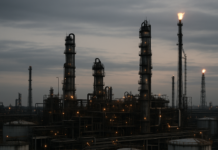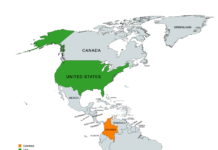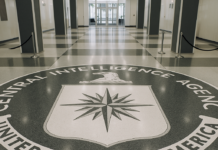
Japan and the United States have agreed to deepen cooperation on next-generation nuclear energy and critical minerals, cementing a partnership aimed at reducing dependence on China for essential technologies. The accord, signed in Tokyo by President Donald Trump and Prime Minister Sanae Takaichi, outlines plans to coordinate investment in rare earths, diversify supply chains, and revive Japan’s nuclear technology exports.
The agreement, formalized at the Akasaka Palace, establishes a framework for collaboration in mining, processing, and recycling critical minerals that power modern industries — from electric vehicles and smartphones to fighter jets and renewable energy systems. The U.S. and Japan will identify priority projects within six months, offer financial support through loans and grants, and develop a shared stockpiling system to stabilize supplies during market disruptions.
Both nations have avoided naming China directly, but the deal reflects growing unease about Beijing’s near-total control of rare earth processing. China handles more than 90 percent of global output, and recent export curbs have heightened concerns in Washington and Tokyo about supply chain vulnerability. The White House said the partnership aims to build “diversified, liquid, and fair markets” for critical materials while promoting responsible mining and fair competition.
The two leaders also pledged closer collaboration on nuclear power, including the construction of advanced AP1000 and small modular reactors. The plan would involve major Japanese firms such as Mitsubishi Heavy Industries and Toshiba Group, potentially positioning Japan to reenter global nuclear markets after years of retreat following the 2011 Fukushima disaster. Prime Minister Takaichi, who took office last week as Japan’s first female leader, has made energy independence and technological leadership core priorities of her administration.
For the United States, the initiative complements its strategy to secure access to essential resources and support allies’ efforts to counterbalance China’s economic influence. The framework also calls for a bilateral “Mining, Minerals, and Metals Investment Ministerial” within six months to coordinate private-sector participation. Twenty Japanese and American companies have already expressed interest in projects tied to a $550 billion investment package covering energy, manufacturing, and infrastructure.
Energy cooperation featured prominently in the discussions as well. Japan has been expanding imports of U.S. liquefied natural gas (LNG) to offset reduced Russian supplies under sanctions linked to the war in Ukraine. Tokyo’s top LNG buyer, JERA, recently signed long-term contracts for American gas deliveries starting in 2030, equating roughly to Japan’s annual imports from Russia’s Sakhalin-2 project. Tokyo Gas has also secured preliminary agreements for supply from Alaska and increased stakes in U.S. energy production.
Takaichi’s government continues to weigh energy diversification against cost concerns. Analysts note that LNG from Russia remains cheaper and faster to ship than fuel from the U.S. Gulf Coast, but Japan is under pressure to align with Washington’s broader sanctions policy.
The Tokyo summit highlighted a shared commitment to reducing strategic dependence on China and Russia while advancing cleaner and more secure energy systems. As Trump and Takaichi prepare for additional regional meetings, including with Chinese President Xi Jinping in South Korea, the new framework signals a coordinated effort by Washington and Tokyo to reshape the economic and technological landscape of the Indo-Pacific.
Green = USA
Japan = Blue
Image is licensed under the Creative Commons Attribution-Share Alike 4.0 International license and was created using MapChart (https://mapchart.net).








